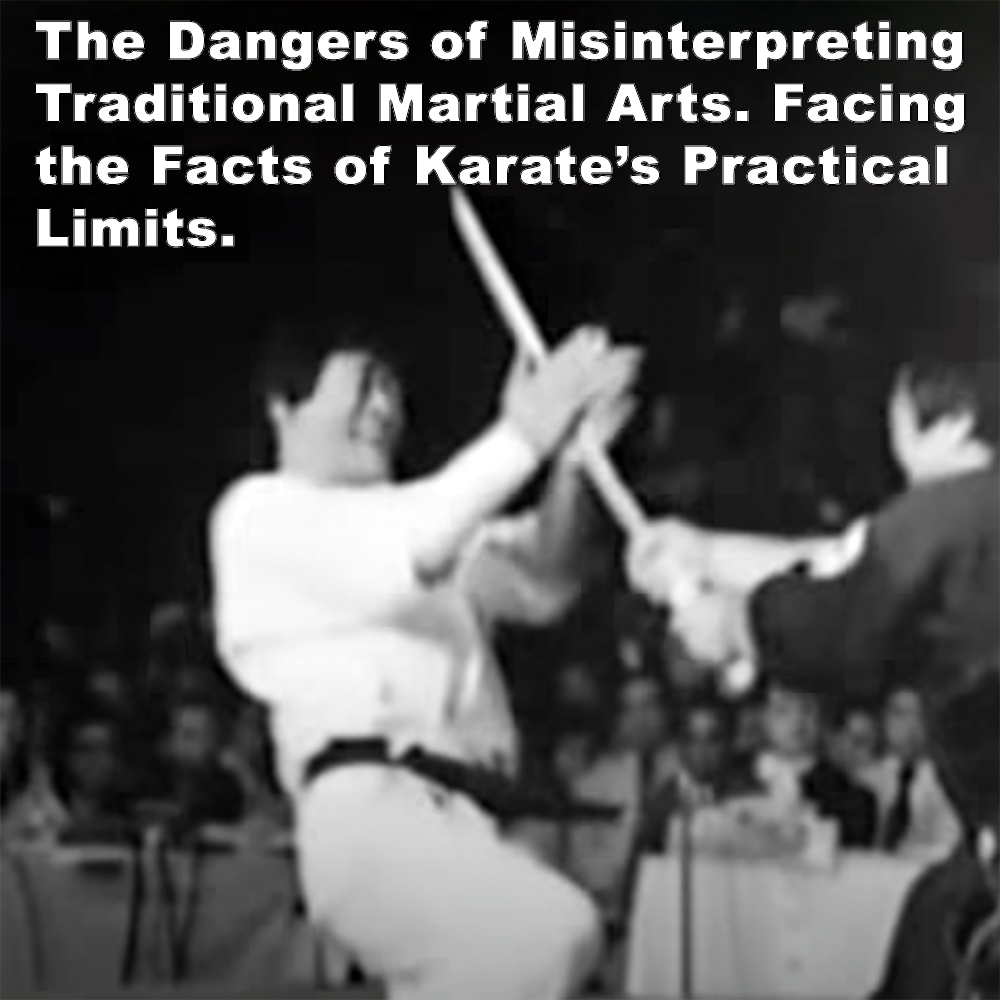
The Dangers of Misinterpreting Traditional Martial Arts. Facing the Facts of Karate’s Practical Limits.
Posted by ADAM CARTER on JUN 16, 2024

The Dangers of Misinterpreting Traditional Martial Arts. Facing the Facts of Karate’s Practical Limits.
(Approx 2 minute 5 second read)
Some of the comments on my articles are really interesting to read, often inspiring me to write more. Many of them offer insight into the training of friends and colleagues from all over the world.
On the other hand – OMG.
The article in question was where I wrote about the ineffective and quite ludicrous idea that there are four or more aggressors waiting to attack on the points of a compass when considering application within kata.
One comment stated that I didn’t understand kata because the points of the compass analogy I made was incorrect. Apparently, the aggressors are waiting with swords to attack a defender with just ‘empty hands’.
I guess many of us have witnessed demonstrations where practitioners, and regrettably some world-famous masters, perform the ‘catching the sword in empty hand technique’.
Let’s get this out of the way first. The core message is clear: facing a sword with bare hands is a bad idea. A very bad idea.
This commentator suggested that he knew the secrets of his style (I won’t name it to spare the blushes), and that practicing and defending against a sword was the most advanced technique for karate.
This notion is not only impractical but dangerously misleading. It’s one thing to appreciate the historical context of martial arts, where such techniques might have had symbolic or ritualistic value. However, promoting the idea that unarmed defense against a sword is a feasible strategy is totally irresponsible.
The crux of effective self-defense training lies in practicality and realism. Martial arts, at their core, should prepare practitioners for real-world scenarios. This includes understanding the limitations of what your body can achieve against various threats. Empty hand versus weapon training can be beneficial, but it should always be grounded in reality.
The romanticized vision of ancient warriors and mystical techniques often clouds the practical application of the martial arts. The essence of kata, for instance, is frequently misunderstood. Kata should be seen as a repository of techniques, principles, and strategies, not as a literal guide to combat scenarios.
The interpretation of kata should evolve with understanding, not adhere rigidly to traditional explanations that no longer hold up under scrutiny.
What truly matters is the adaptability and understanding of principles behind techniques. This foundational knowledge can be adapted to various situations, including unarmed defense against an armed assailant, but always with the caveat that evasion and escape are the primary goals.
While the idea of defending against a sword with bare hands might capture the imagination, it is not practical reality. Our focus should be on realistic, applicable techniques that enhance our ability to protect ourselves and others. We should not indulge in fantasy and ignore reality. Karate, like any martial art, has practical limits.
After all, who needs practical self-defense techniques when you can rely on the mystical secrets passed down from ancient masters? Just make sure you have a good health insurance plan. Because, you know, what could possibly go wrong?
